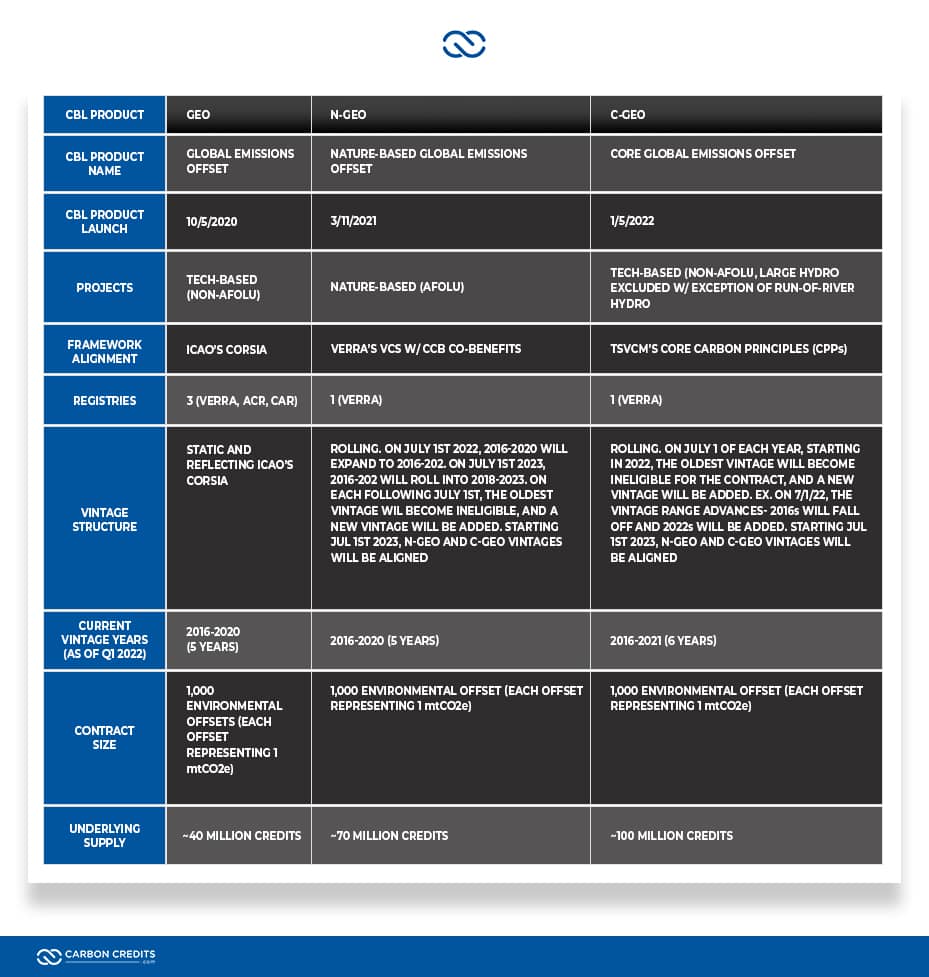The carbon sector is still in its early stages, but there are already a few different products available in the market.
If you’ve been spending lots of time in the carbon credit space, you may have seen the terms GEO, N-GEO, and C-GEO thrown around before.
These products have been around for a while now, but like much of the carbon sector, have flown under the radar of most investors.
If you don’t know what they are, or if you do but don’t really know what the difference between them is, then keep reading on.
Offset vs. Allowance Credits
You’re probably already aware of European Union Allowances (EUAs) and California Carbon Allowances (CCAs).
These carbon credits are allowances from their respective compliance regimes in the European Union and the U.S. state of California, respectively.
In essence, they allow their holders to emit a corresponding amount of carbon equivalent pollution every year. Another example of this type of allowance would be the Regional Greenhouse Gas Initiative (RGGI) allowances.
These allowances are tradable, and a secondary futures market has also been risen up around them. These carbon allowance futures are what many of the largest carbon funds, such as KRBN, hold.
GEO, N-GEO, and C-GEO are similar to those carbon allowance futures, but there’s one major difference.
The big difference is that instead of being based on compliance market allowances, the GEO line of products are based on voluntary market carbon offsets instead.
In fact, it’s even in their names – GEO stands for Global Emissions Offset.
There are the CBL Global Emissions Offset (GEO), the CBL Nature-Based Global Emissions Offset (N-GEO), and the CBL Core Global Emissions Offset (C-GEO) contracts. Those are the three types of offset contracts referred to when GEO, N-GEO, and C-GEO are mentioned.
These three offsets were launched by the Chicago Mercantile Exchange (CME Group), the world’s largest derivatives marketplace, in order to respond to the growing demand for carbon offset products in the carbon sector.
Now, just like how there’s a difference between the EUA, CCA, and RGGI futures, there’s also a difference between the GEO, N-GEO, and C-GEO offset futures.
However, it isn’t as straightforward as each one simply being based in a different locale, so we’ll go over the major differences next.
We’ll start with the first product, launched in late 2020 – GEO.
GEO (Aviation Industry Carbon Offset)
GEO’s futures contracts are based on carbon offsets from three major registries – Verra, the American Carbon Registry, and the Climate Action Reserve. Tech-based projects (that is, projects not falling under Agriculture, Forestry, or Other Land Use categories) that follow the International Civil Aviation Organization’s CORSIA standard can be found here.
To put it more simply, GEO futures contracts are based on high-quality carbon credits that adhere to the international aviation industry standard for emissions offsetting. This is why they are sometimes also referred to as “Aviation Industry Carbon Offsets”.
Now, while the CORSIA standard was originally intended for use by the aviation industry, by no means are GEO contracts limited only to airlines and other companies in the aviation sector.
CORSIA is a stringent framework that was carefully devised over several years with guidance from the United Nations, which is why offsets that meet the CORSIA criteria are verifiable and high-quality. This makes them a great choice for any company or individual looking for a tangible means of offsetting their emissions.
N-GEO (Nature Based Carbon Offset)
Following GEO, we have N-GEO, which was launched just a few months after the former was.
N-GEO is comprised of nature-based offsets projects from the Verra registry – projects that fall under the Agriculture, Forestry, or Other Land Use (AFOLU) categories. This is in contrast to GEO, which does not contain any AFOLU projects.
Nature-based solutions have many advantages and disadvantages when compared to tech-based offset projects. For instance, they can provide valuable contributions to biodiversity, but it’s also often considered more difficult to accurately verify the amount of carbon actually offset in nature-based projects.
Because of this, N-GEO includes a large chunk of the offset market that isn’t covered by GEO. This allows more options for companies looking to mitigate their own emissions, particularly those that belong to the AFOLU sector themselves.
C-GEO (Tech Based Carbon Offset)
Last but not least is C-GEO, which was launched at the beginning of 2022. The C in C-GEO stands for Core, which refers to the Taskforce on Scaling Voluntary Carbon Markets’ Core Carbon Principles (CCPs).
The CCPs are the groundwork laid by the Taskforce on Scaling Voluntary Carbon Markets for creating a global, large-scale carbon credit marketplace. C-GEO contracts are comprised of tech-based, non-AFOLU offset projects from the Verra registry that align with the CCPs.
Though first established in January 2021, the CCPs are a work in progress and are undergoing further refinement by an independent governance body comprised of a number of representatives, advisors, and institutes for climate action. Further expansions to the CCPs are expected in phased launches through 2022.
As such, C-GEO contracts are still in their infancy. However, it’s quite possible that the CCPs will become the new unifying global standard for offset projects given the amount of expertise and clout backing the standard.
That makes C-GEO futures a great choice for companies looking for high-quality technology-based offset credits that also want to bank on the future of the Core Carbon Principles.
Below is a table from the CME Group summarizing the primary differences between GEO, N-GEO, and C-GEO:



